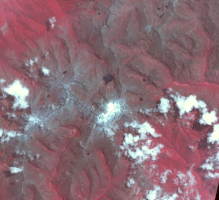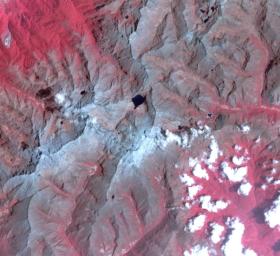
Humboldt Glacier, 2002
Click on the image for larger versionVenezuela may be the first nation in modern history to lose all its glaciers after climate scientists downgraded its last one to an ice field. The International Cryosphere Climate Initiative (ICCI said that the nation's only remaining glacier – the Humboldt, or La Corona, in the Andes – had become too small to be classed as a glacier. Researchers found that the glacier had shrunk from 450 hectares to just two. The images were acquired July 21, 2002 and March 15, 2024. They cover an area of 14.2 by 15.3 km, and are located at 8.5 degrees north, 71 degrees west.
With its 14 spectral bands from the visible to the thermal infrared wavelength region and its high spatial resolution of about 50 to 300 feet (15 to 90 meters), ASTER images Earth to map and monitor the changing surface of our planet. ASTER is one of five Earth-observing instruments launched Dec. 18, 1999, on Terra. The instrument was built by Japan's Ministry of Economy, Trade and Industry. A joint U.S./Japan science team is responsible for validation and calibration of the instrument and data products.
The broad spectral coverage and high spectral resolution of ASTER provides scientists in numerous disciplines with critical information for surface mapping and monitoring of dynamic conditions and temporal change. Example applications are monitoring glacial advances and retreats; monitoring potentially active volcanoes; identifying crop stress; determining cloud morphology and physical properties; wetlands evaluation; thermal pollution monitoring; coral reef degradation; surface temperature mapping of soils and geology; and measuring surface heat balance.
The U.S. science team is located at NASA's Jet Propulsion Laboratory in Pasadena, Calif. The Terra mission is part of NASA's Science Mission Directorate, Washington.
More information about ASTER is available at http://asterweb.jpl.nasa.gov/.

 Planetary Data System
Planetary Data System













